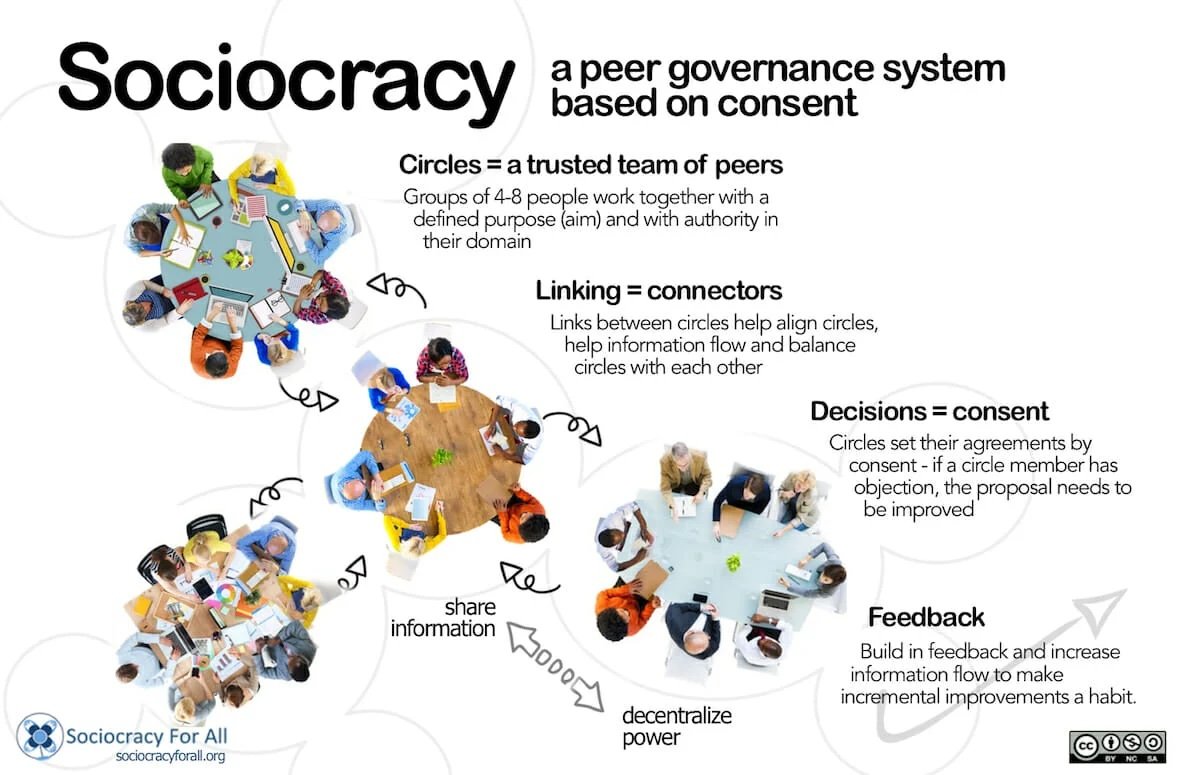Sociocratic Governance
Sociocratic governance, also known as sociocracy or dynamic governance, is a system of governance and decision-making that emphasizes collaboration, consent, and distributed authority within organizations. Developed by Dutch engineer Gerard Endenburg in the 1970s, sociocracy aims to create more inclusive and effective decision-making processes that empower all members of an organization.
At the heart of sociocratic governance is the concept of "consent decision-making." In contrast to traditional democratic decision-making, which often relies on majority rule, consent decision-making seeks to ensure that decisions are made with the general agreement and consent of all stakeholders involved. This means that decisions move forward unless there are reasoned objections from individuals with relevant expertise or concerns.
Key principles and practices of sociocratic governance include:
Circle Structure: Sociocratic organizations are typically structured into semi-autonomous circles or teams, each responsible for a specific area of work or decision-making. These circles are interconnected through a series of double-linked roles, allowing for information flow and coordination between different parts of the organization.
Consent Decision-Making: Decisions within sociocratic organizations are made through a process of consent rather than consensus. This means that proposals are put forward and refined until they meet the general agreement of all members present, with any objections addressed through discussion and modification of the proposal.
Elected Leadership: Sociocratic organizations elect leaders or facilitators for each circle or team through a consent-based process. These leaders are responsible for facilitating meetings, ensuring that decisions are made in accordance with sociocratic principles, and representing the circle to higher-level circles or governance structures.
Feedback Loops: Sociocracy emphasizes the importance of feedback loops and continuous improvement. Circles regularly evaluate their processes and performance, seeking input from members and making adjustments as needed to enhance effectiveness and efficiency.
Open Communication: Sociocratic organizations foster a culture of open communication and transparency, where information is freely shared and all members are encouraged to contribute their perspectives and ideas.
Role Clarity and Accountability: Each member of a sociocratic organization has a clearly defined role and set of responsibilities within their circle or team. This clarity helps to ensure accountability and effective decision-making within the organization.
Sociocratic governance has been applied in a variety of settings, including businesses, non-profit organizations, cooperatives, and intentional communities. Advocates of sociocracy argue that it promotes collaboration, empowers individuals, and enhances organizational effectiveness by harnessing the collective intelligence and creativity of all members. While sociocratic governance may require a shift in mindset and culture for some organizations, its principles offer a promising framework for creating more democratic, inclusive, and resilient organizational structures.
